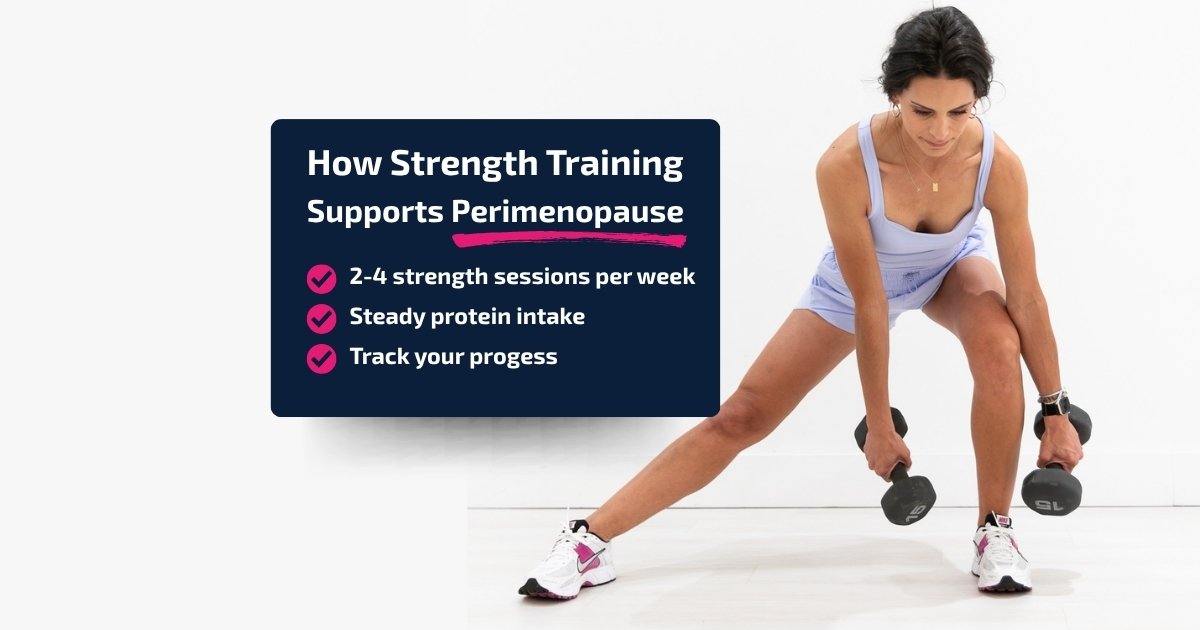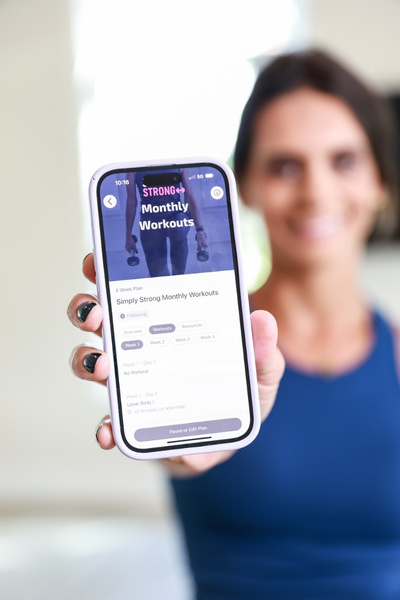If you’re in your 30s, 40s, or beyond, you’ve probably already noticed that your body feels different. And, no, you’re not imagining it. During this stage of our lives, hormones, muscle mass, bone density, and metabolism all shift, which can cause a slew of changes. But don’t worry, it doesn’t need to be as life-altering as it sounds; there are things you can do (ahem, strength training) that will help to mitigate unwanted changes and leave you feeling strong and more like yourself.
Strength training isn’t just a “nice to have” thing in your life; it’s now essential, and I am going to explain to you why!
You’re facing Some Changes. Let’s Talk About Them
As we transition into midlife, our estrogen levels begin to drop, and with that, a few things tend to happen:
- Muscle mass starts to decline. Some studies have shown that adults lose 3-8% of lean mass each decade after age 30.
- Bone density takes a big hit. The drop in your estrogen levels means that the skeleton loses its protection, increasing the risk of osteoporosis and fractures.
- Your metabolism slows, and belly fat starts to develop and become more stubborn to lose.
- Recovery becomes slower. You might start to feel less energy, increased soreness, and a decrease in your ability to “bounce back” from workouts or anything strenuous.
I know that this all sounds pretty scary, but here’s what’s empowering: strength training is one of the most powerful tools you can use to offset all of this.
Why strength training is a game-changer
Let’s talk about some of the major benefits of regular strength training during perimenopause and beyond:
- Preserves and builds lean muscle: The more muscle you have on your frame, the higher your metabolism. The higher your metabolism, the less fat you will gain.
- Improves bone density: Lifting weights places a purposeful load on your bones, which then stimulates bone-forming cells to take action. This process helps to counteract bone loss during menopause.
- Improves stability, mobility, and functionality: The more muscle and overall strength that you have, the better your balance, fewer falls, and more independence you’ll experience.
- Supports mental health and hormone balance: When strength training, your body releases endorphins, improves sleep, and helps to mitigate mood swings - all of which are major concerns during this transitional phase of your life.
- Helps you age gracefully: Rather than just suffering through menopause, you can support your body to stay active, capable, strong, and energetic far into your 50s, 60s, and beyond.
What Should Your Strength Training Program Include?
Here’s the thing: not all strength training programs are created equal. Women over 35 need specific training to make the most of their workouts and to feel their best. Your strength training program should include:
- Compound movements with a progressive overload focus: Think the basics - squats, deadlifts, presses, and rows. These moves hit multiple muscle groups at once and drive big changes. But it’s more than that; you also need to be challenging yourself. You can keep lifting the same weight forever. You need to apply progressive overload, which is gradually increasing your reps and/or weights over time.
- Unilateral exercises: This is single-sided work that isolates one side of your body at a time. This type of training is critical to correct muscle imbalances, support stability, and help us become more balanced and capable as we age.
- Mobility and core work: Yes, lifting heavy and applying progressive overload is important, but there’s more to the story than that. You also need to be able to move well. Your hip, shoulder, and spine mobility, along with a stabilized core, will take you really far when it comes to longevity and injury prevention.
- Rest days and recovery built in: Ladies, recovery is just as important as your training. You should be getting at least 2 full rest days per week, along with prioritizing sleep, eating adequate protein, and staying hydrated.
Practical tips to get started
Hopefully, this article will help light a little fire under you to start your strength training journey (p.s. You’re never too late!). Here are some practical tips for getting started:
- Aim for 2-4 strength training sessions per week. It’s plenty.
- Start with weights that are manageable for you now and build your strength from there. Don’t be afraid to be a beginner; there’s nothing to be gained from going too hard and ending up with an injury.
- Maintain a steady protein intake. Muscle repairs and grows when you support it with proper protein intake. Aim for .8-1g of protein per pound of bodyweight or goal bodyweight.
- Track your progress. You should be tracking your weights, reps, and any improvements you see and feel in your training, and then reference that as you move forward in your training journey.
- Focus on consistency. There will always be days or weeks when you are short on time or need to take breaks from training. The most important thing is to jump right back in when you’re able. Consistency will always win, not perfection.
What About Cardio and Other Forms of Exercise?
Don’t take this message as “strength training is the only form of exercise that matters.” Cardio and other forms of exercise are great, too, and all have their place. Cardio is great for cardiovascular health and enjoyment, but it shouldn’t be your main focus. Add cardio a couple of times per week or simply focus on hitting a daily step goal (I recommend 7-10k steps per day).
The mindset shift
Many women in their 40s, 50s, and beyond think of strength training as a way to achieve physique goals; however, I want to re-frame that for you, allowing you to see that it’s actually your health insurance for your next chapter.
Strength training during this phase of life is about being strong, capable, and confident in your body and your ability to maintain your health and functionality as you age. No matter what your current age is right now, your decision to start strength training is about showing up for your future self.
Final thoughts
If you’re navigating through perimenopause and beyond and you’ve been wondering how to support your changing body, take this as your invitation to go pick up those weights and start feeling more like yourself again. Start from exactly where you are, show up consistently, follow a program designed for your needs, and watch how your body responds. Your second half of life can be your strongest yet if you start training for it now.

